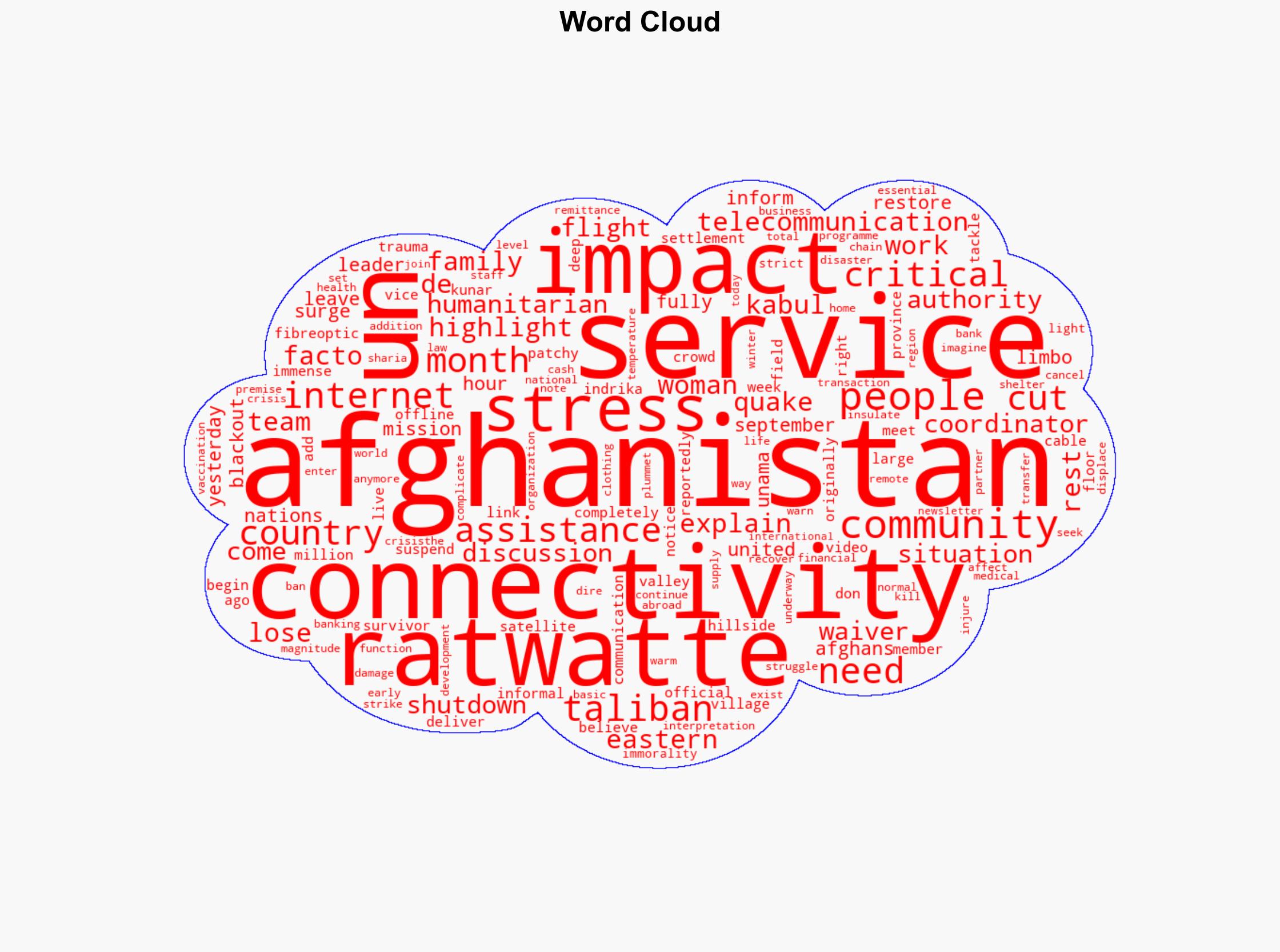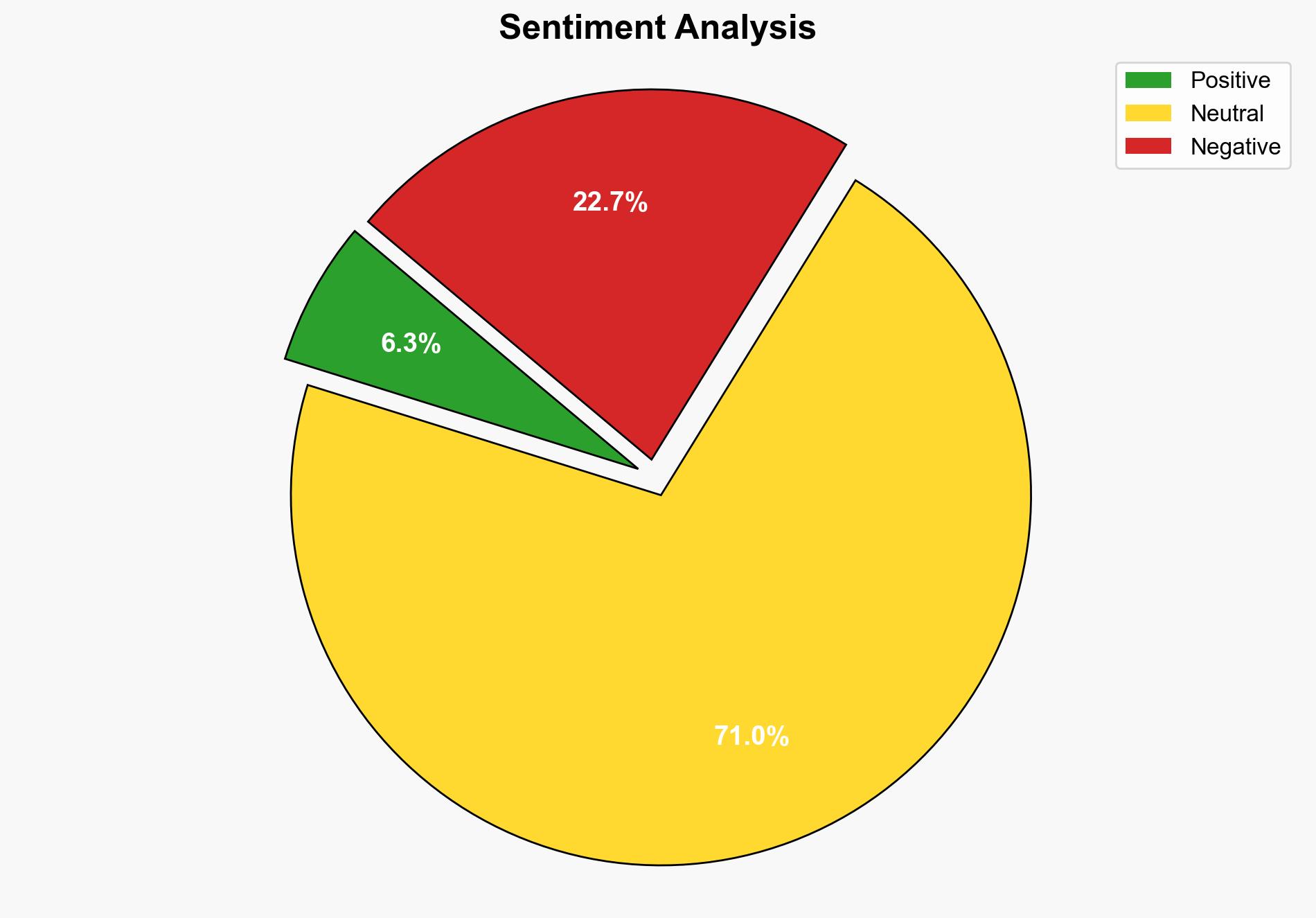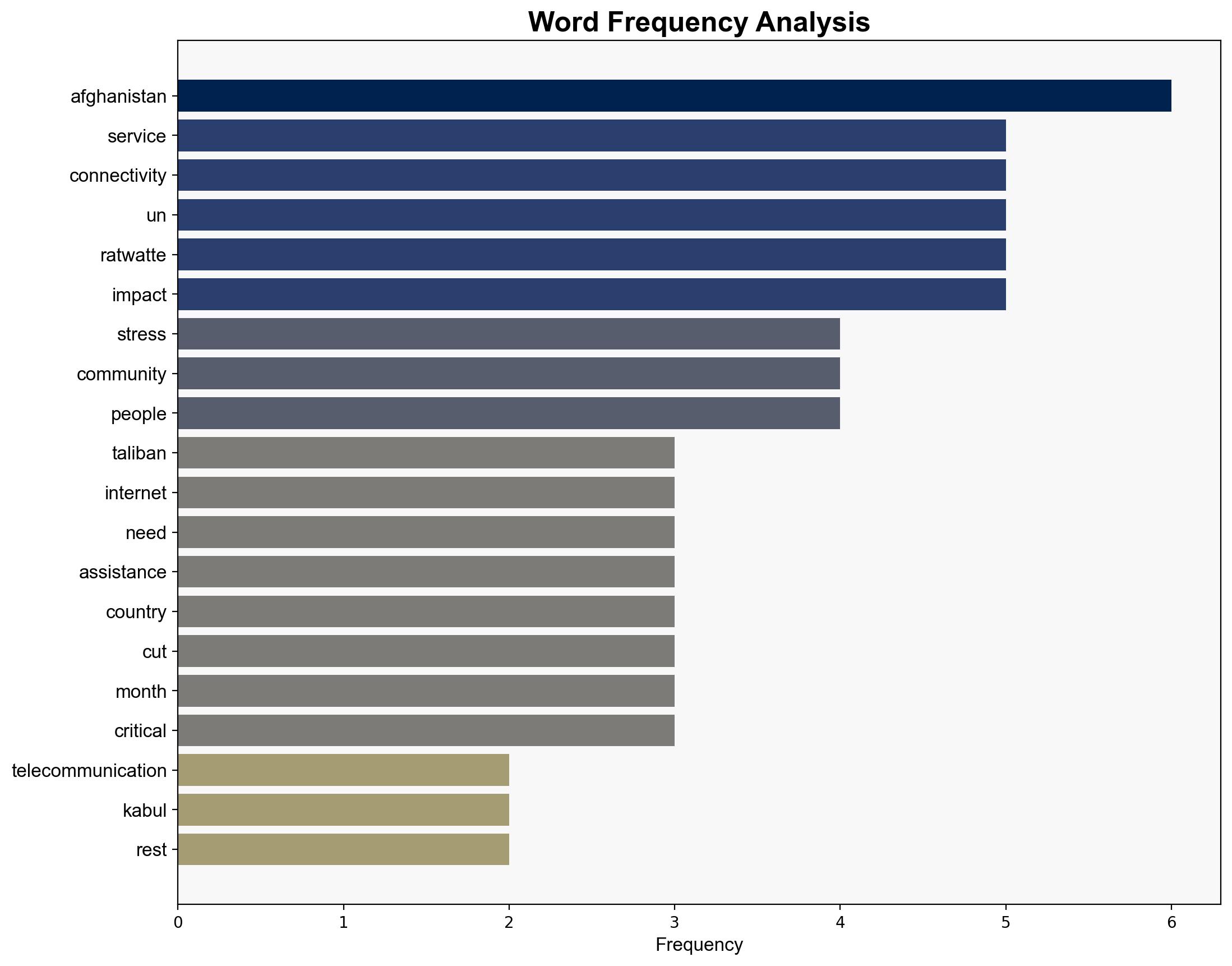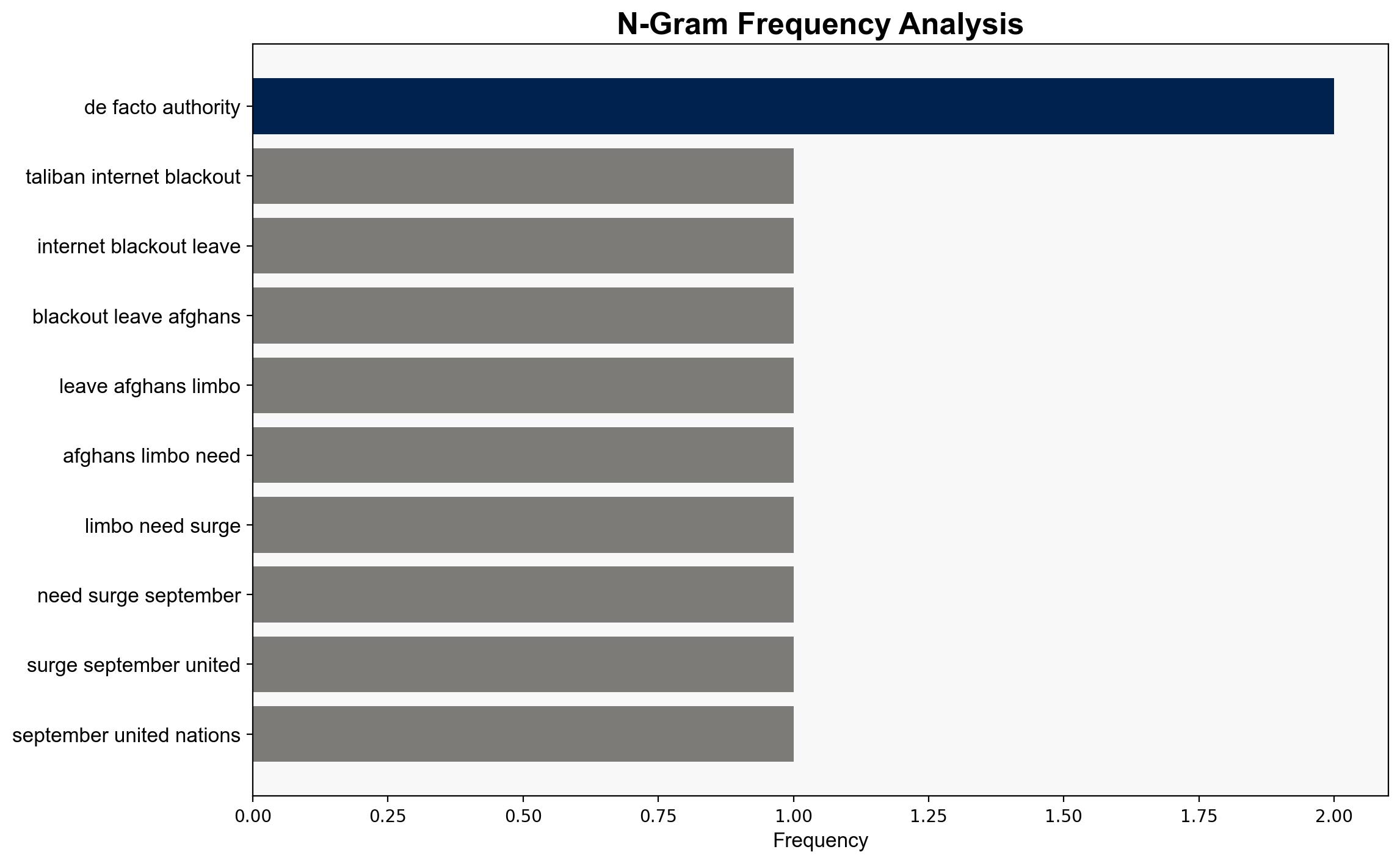Taliban internet blackout leaves Afghans in limbo while needs surge – Globalsecurity.org
Published on: 2025-10-01
Intelligence Report: Taliban internet blackout leaves Afghans in limbo while needs surge – Globalsecurity.org
1. BLUF (Bottom Line Up Front)
The most supported hypothesis is that the Taliban’s internet blackout is primarily a control measure to enforce social norms and suppress dissent, with a moderate confidence level. The recommended action is to engage in diplomatic efforts to restore connectivity while preparing humanitarian aid strategies that do not rely on digital infrastructure.
2. Competing Hypotheses
1. **Hypothesis A**: The Taliban implemented the internet blackout to enforce social norms and control information flow, aligning with their strict interpretation of Sharia law.
2. **Hypothesis B**: The blackout is a strategic move to isolate Afghanistan from international influence and prevent external interference in domestic affairs.
Using ACH 2.0, Hypothesis A is better supported by the evidence of the Taliban’s previous actions to restrict women’s rights and control media. Hypothesis B is less supported due to the lack of direct evidence linking the blackout to international isolation strategies.
3. Key Assumptions and Red Flags
– **Assumptions**: It is assumed that the Taliban has the technical capability to selectively enforce internet blackouts and that their primary motivation is ideological.
– **Red Flags**: The lack of detailed information on the technical execution of the blackout and the absence of alternative communication strategies for humanitarian aid raise concerns about potential information gaps.
– **Potential Bias**: There may be a cognitive bias towards viewing the Taliban’s actions solely through the lens of ideological enforcement, potentially overlooking strategic geopolitical motives.
4. Implications and Strategic Risks
The internet blackout exacerbates humanitarian challenges, disrupting aid delivery, healthcare, and financial services. This could lead to increased instability, with potential for civil unrest and further isolation of Afghanistan. The situation presents a risk of cascading effects, including economic collapse and heightened regional tensions.
5. Recommendations and Outlook
- Engage in diplomatic dialogues with regional stakeholders to advocate for the restoration of internet services.
- Develop contingency plans for humanitarian aid delivery that do not rely on digital infrastructure.
- Scenario-based projections:
- **Best Case**: Internet services are restored through international mediation, stabilizing humanitarian operations.
- **Worst Case**: Prolonged blackout leads to economic collapse and increased regional instability.
- **Most Likely**: Partial restoration of services with continued restrictions, maintaining a fragile status quo.
6. Key Individuals and Entities
– Indrika Ratwatte
– United Nations Assistance Mission in Afghanistan (UNAMA)
7. Thematic Tags
national security threats, cybersecurity, counter-terrorism, regional focus




